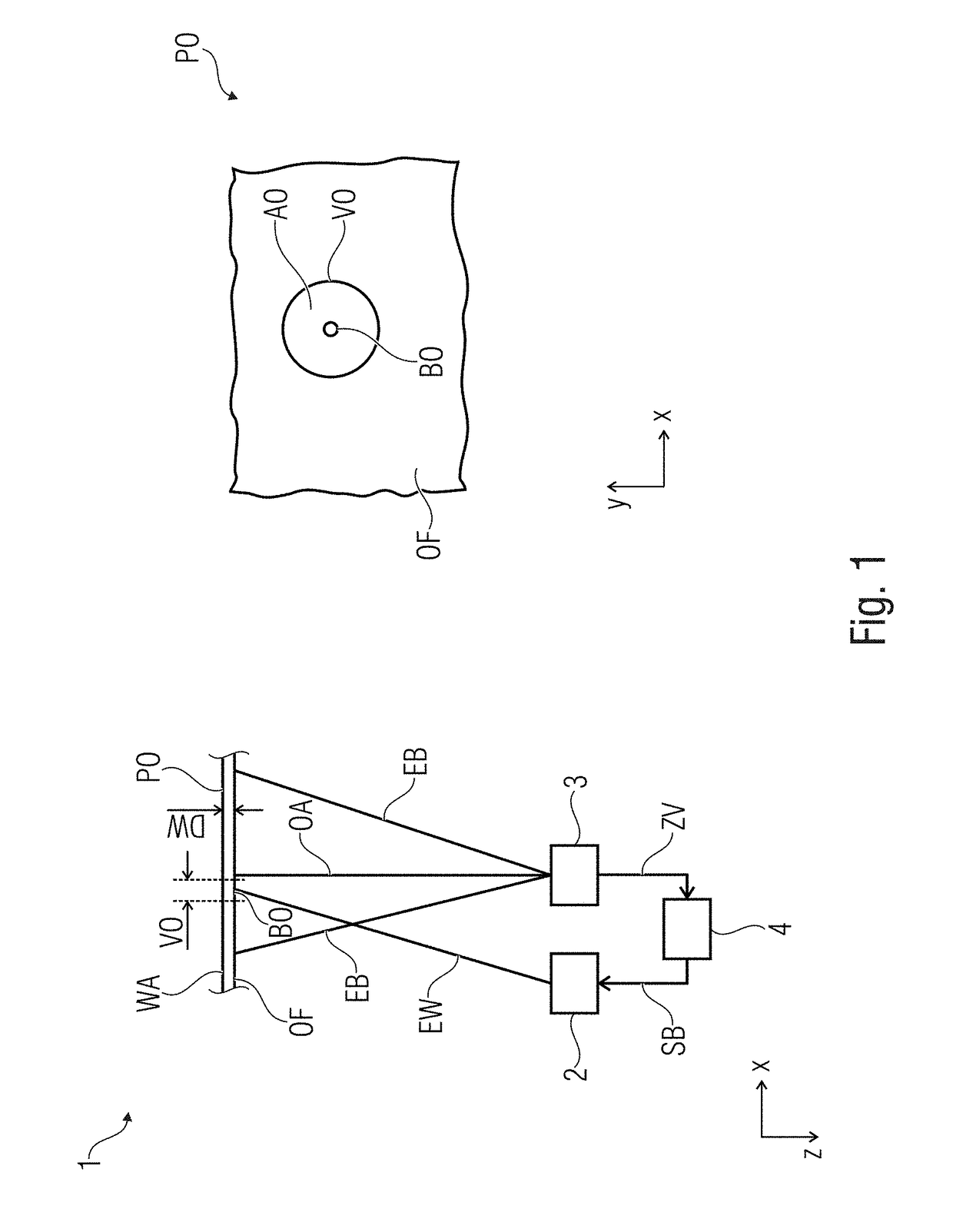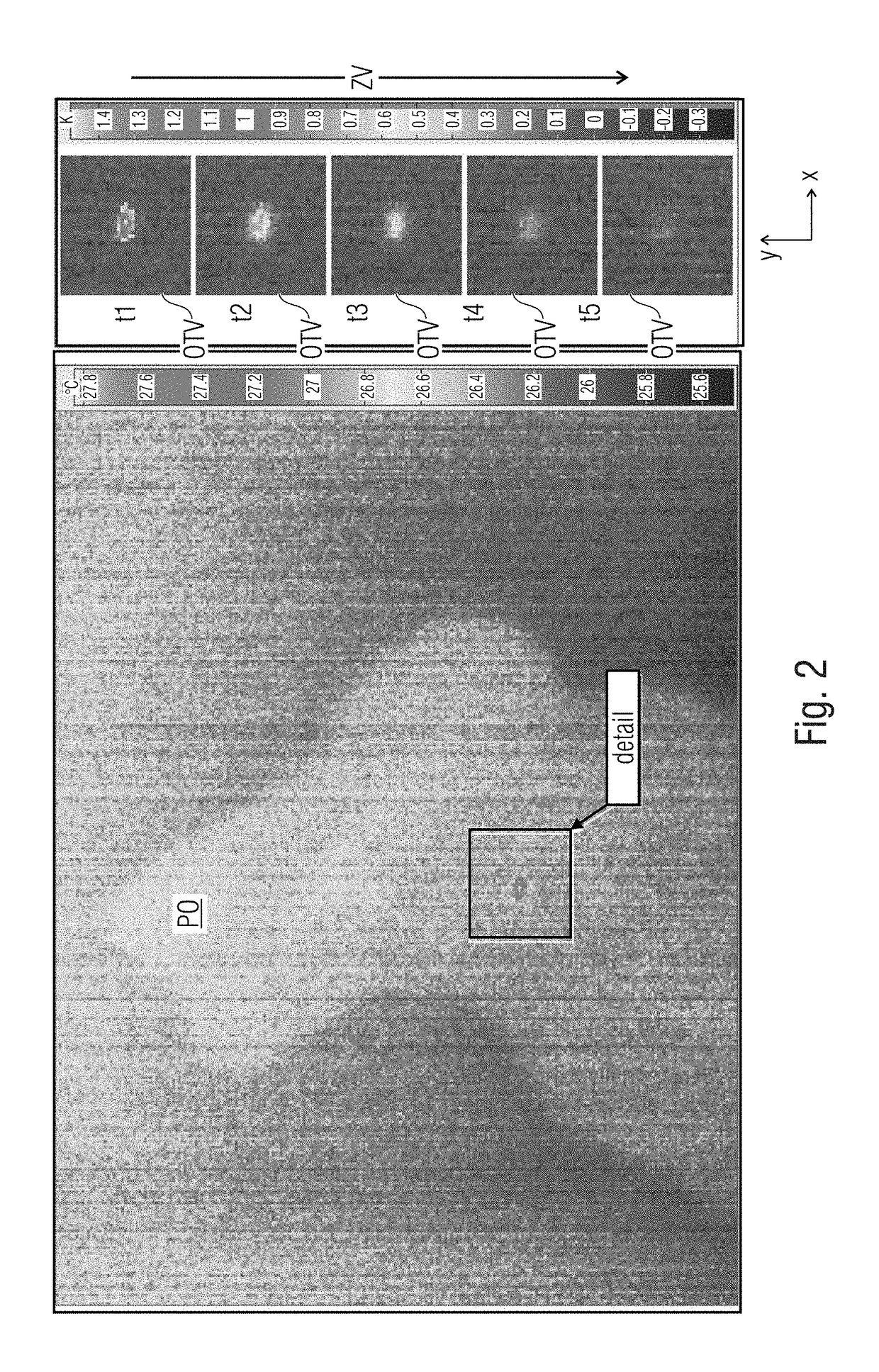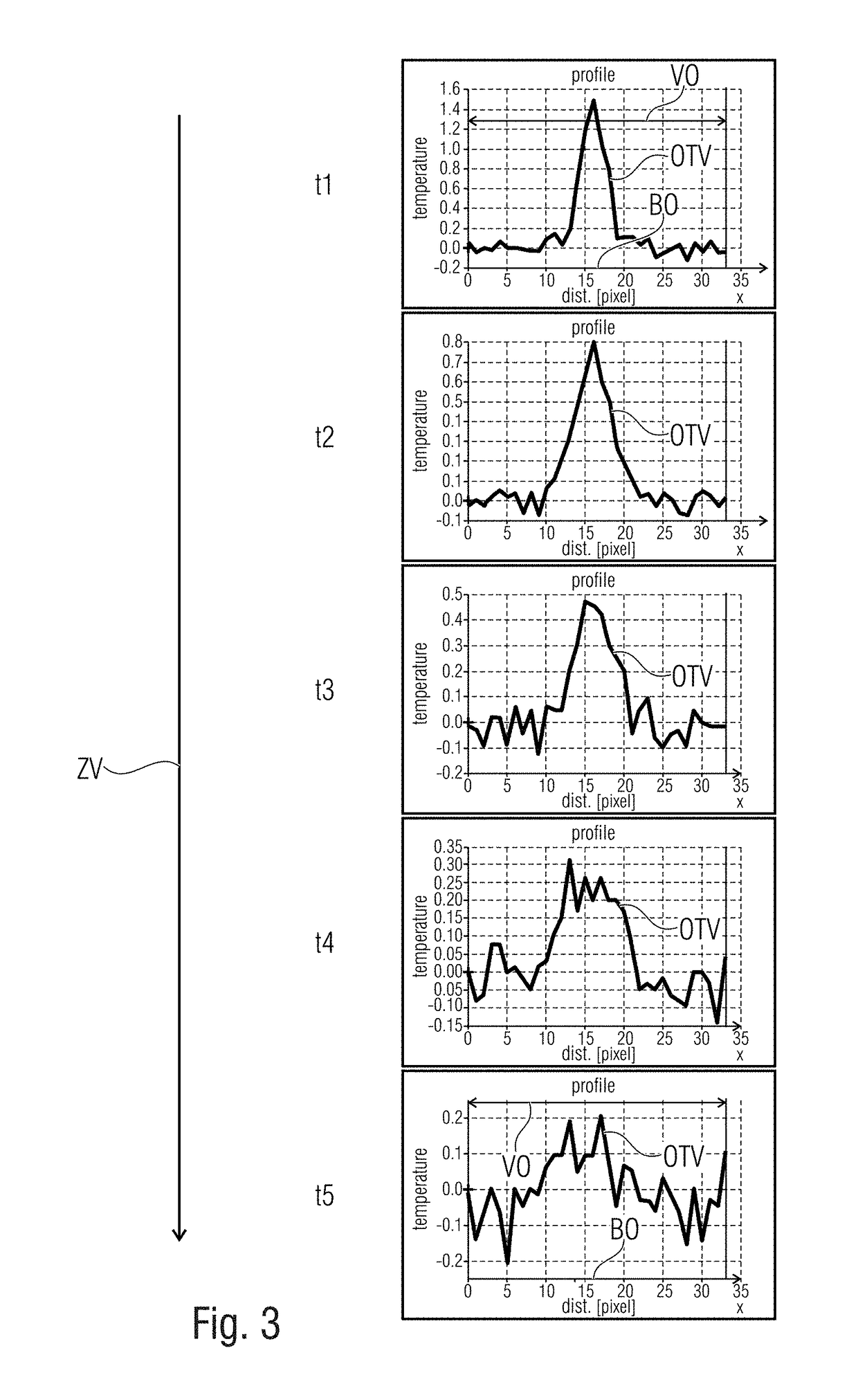Thermographic Examination Means and Method for Non-Destructive Examination of a Near-Surface Structure at a Test Object
a near-surface structure and non-destructive technology, applied in the direction of optical radiation measurement, material flaw investigation, instruments, etc., can solve the problems of high cost, noise has a considerable effect on the measurement accuracy of the system, and the measurement method in many cases cannot be employed economically, so as to achieve the effect of easy determination
- Summary
- Abstract
- Description
- Claims
- Application Information
AI Technical Summary
Benefits of technology
Problems solved by technology
Method used
Image
Examples
first embodiment
[0058]FIG. 1 shows a schematic top view of an inventive thermographic examination means 1 as well as a pertinent schematic front view of a test object PO in a magnified representation.
[0059]The thermographic examination means 1 includes:
[0060]a heating device 2 for applying heat energy to a surface region to be heated BO of the test object PO;
[0061]a thermal sensor means 3 for detecting a time profile, following the application of heat energy, of a spatial temperature distribution on a surface region to be measured VO of the test object PO, the surface region to be measured VO including the surface region to be heated BO as well as an outer surface region to be measured AO which is adjacent to the surface region to be heated BO; and an evaluation means 4 for evaluating the time profile of the spatial temperature distribution so as to detect at least one parameter DW of the near-surface structure at the surface region to be measured VO.
[0062]In the solutions known from sources [1] to...
second embodiment
[0096]FIG. 5 shows a schematic top view of an inventive thermographic examination means 1 as well as a pertinent schematic front view of a test object PO in a magnified representation.
[0097]In accordance with a particularly advantageous further development of the invention, the heating means 2 is configured to apply heat energy in a simultaneous or time-overlapping manner to several surface regions to be heated BO1, BO2, the thermal sensor means 3 being configured to detect, in a simultaneous or time-overlapping manner, those time profiles of the spatial temperature distributions which follow the application of heat energy, on several surface regions of the test object PO that are to be measured VO1, VO2, the surface regions to be measured VO1, VO2 each including one of the surface regions to be heated BO1, BO2 as well as one outer surface region AO1, AO2 adjacent to the respective surface region to be heated BO1, BO2; and wherein the evaluation means 4 is configured to evaluate the...
third embodiment
[0101]FIG. 6 shows a schematic top view of an inventive thermographic examination means 1 as well as a pertinent schematic front view of a test object PO in a magnified representation. In FIG. 6, the heating device 2, the thermal sensor means 3 and the inclination detection means 6 are depicted to be within one plane. This is only due to reasons related to drawing. In reality, it is more favorable for the heating device 2 and the thermal sensor means 3 to span a first plane, and for the thermal sensor means 3 and the inclination detection means 6 to span a second plane, which planes are arranged at right angles in relation to each other, for example.
[0102]In accordance with an advantageous further development of the invention, the evaluation means 4 is configured to take into account a spatial profile of an inclination NE of the surface region to be measured VO with regard to an optical axis OA of the thermal sensor means 3 in the evaluation of the time profile of the spatial temper...
PUM
| Property | Measurement | Unit |
|---|---|---|
| near-surface structure | aaaaa | aaaaa |
| heat energy | aaaaa | aaaaa |
| spatial temperature | aaaaa | aaaaa |
Abstract
Description
Claims
Application Information
 Login to View More
Login to View More - R&D
- Intellectual Property
- Life Sciences
- Materials
- Tech Scout
- Unparalleled Data Quality
- Higher Quality Content
- 60% Fewer Hallucinations
Browse by: Latest US Patents, China's latest patents, Technical Efficacy Thesaurus, Application Domain, Technology Topic, Popular Technical Reports.
© 2025 PatSnap. All rights reserved.Legal|Privacy policy|Modern Slavery Act Transparency Statement|Sitemap|About US| Contact US: help@patsnap.com



